Energy storage enclosures are structures designed to safely house energy storage systems. These systems can range from batteries, to flywheels, to compressed air, and are used to store energy for later use. Energy storage enclosures are typically used in applications such as renewable energy integration, backup power systems, and electric vehicles.
One of the primary concerns with energy storage systems is safety. If not properly contained, these systems can pose a fire or explosion risk. Energy storage enclosures are designed to mitigate these risks by providing a robust barrier between the energy storage system and the surrounding environment.
Energy storage enclosures can be made from a variety of materials, including steel, concrete, and composite materials. The design of the enclosure will depend on the specific energy storage system being housed, as well as the intended use case. For example, an energy storage enclosure used in an outdoor environment may need to be weatherproof and provide protection against extreme temperatures.
In addition to safety considerations, energy storage enclosures may also incorporate features such as ventilation systems, fire suppression systems, and remote monitoring and control capabilities. These features can help to ensure that the energy storage system operates safely and efficiently, and can provide early warning of any potential issues.
Overall, energy storage enclosures play an important role in enabling the safe and effective use of energy storage systems in a wide range of applications.
With so many homes having solar panels or wind turbines, energy storage using batteries has increased in popularity to offset the unreliable and intermittent generation of power from those sources.
By using batteries and electronics to store energy and be ready to deliver on demand, a proper cabinet or enclosure must be used. The question is which battery and which enclosure is right for you?
There are several types of batteries used for energy storage applications, each with its own set of advantages and disadvantages. Here are some of the most common types:
Lead-acid batteries: These are the most commonly used batteries for energy storage applications, particularly in off-grid solar and wind power systems. They are affordable and have a long lifespan, but are heavy and require regular maintenance.
Lithium-ion batteries: These batteries are lightweight, have a high energy density, and can be charged and discharged quickly. They are commonly used in electric vehicles and grid-connected energy storage systems.
Sodium-ion batteries: Sodium-ion batteries are a newer type of battery that is gaining popularity for energy storage applications. They have a high energy density, long lifespan, and are made from more abundant materials than lithium-ion batteries.
Flow batteries: Flow batteries use two tanks of electrolytes that are pumped through a cell stack to produce electricity. They have a long lifespan and can be easily scaled up or down, making them ideal for large-scale energy storage applications.
Nickel-cadmium batteries: Nickel-cadmium batteries are known for their reliability and long lifespan, but they have a lower energy density than other battery types and contain toxic materials.
Zinc-bromine batteries: Zinc-bromine batteries are a type of flow battery that uses a zinc-bromine chemistry. They have a long lifespan and can be easily scaled up or down, but they are still relatively new and expensive.
Redox flow batteries: These batteries use two tanks of electrolytes with different redox couples, separated by a membrane. They have a long lifespan and can be easily scaled up or down, making them suitable for large-scale energy storage applications.
Regardless what battery you choose, here are some questions to consider:
- Do you want indoor or outdoor location for the battery cabinet?
- What type of batteries will you use (liquid or solid state)?
- Do you need ventilation or climate control (fans, thermostats, air conditioning/heating)?
- Do you need insulation?
- Will the energy storage enclosure be wall mounted, pole mounted or floor mounted?
- What is the weight load of the batteries and electronics?
- What finish do you want? (color)
- What NEMA rating is required (NEMA 3R, NEMA 4X)?
- What inside configuration do you require (batteries only or batteries + inverters/electronics)?
- Is potential vandalism an issue?
- What is the climate where the battery storage enclosure will be located?
- What are the total BTUs generated by the internal components?
Regardless of what system design you use, it will be the batteries that lie at the core and the battery enclosure that protects them. Choosing the design of that energy storage cabinet is critical. Companies like APX can assist with our standard or custom battery enclosures to accommodate all needs and ensure the security you seek.




